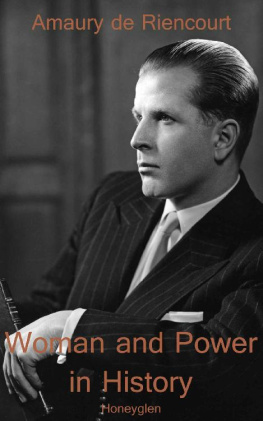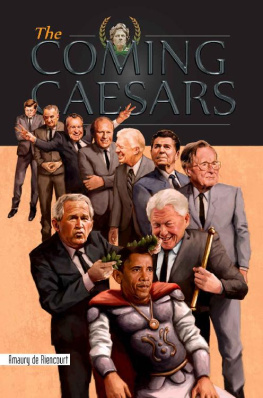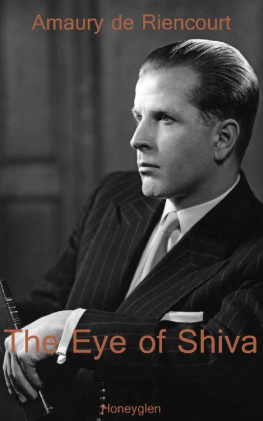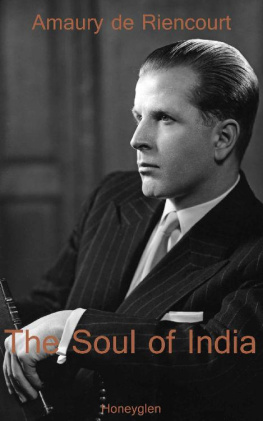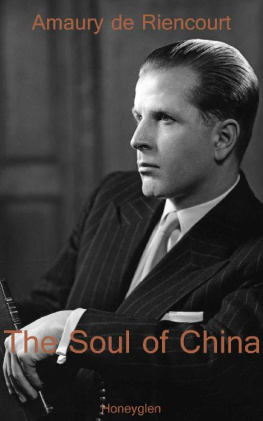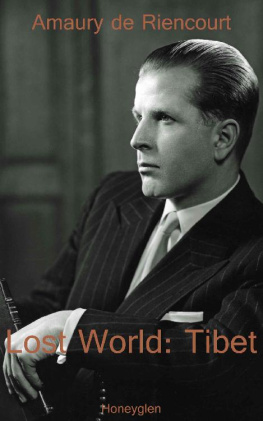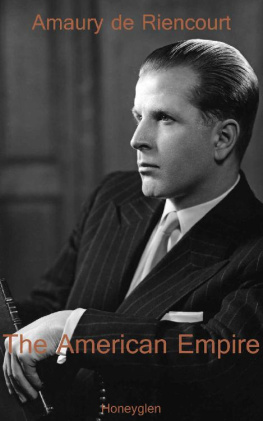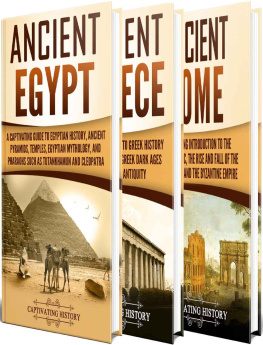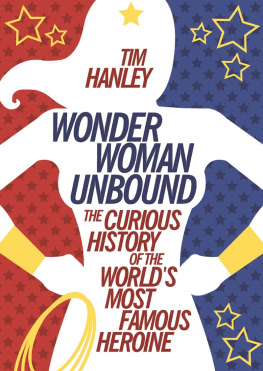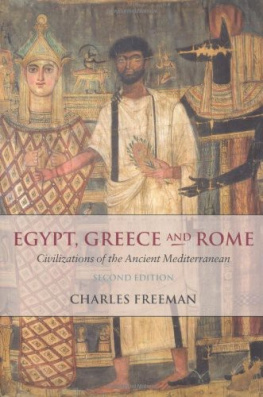WOMAN AND POWER IN HISTORY
By the same author
ROOF OF THE WORLD
THE COMING CAESARS
THE SOUL OF CHINA
THE AMERICAN EMPIRE
WOMAN AND POWER IN HISTORY
THE EYE OF SHIVA
A CHILD OF THE CENTURY
AMAURY de RIENCOURT
WOMAN AND POWER IN HISTORY
Honeyglen Publishing Limited
Copyright Amaury de Riencourt 1974
All rights reserved. No part of this publication may be reproduced, stored in a retrieval system, or transmitted, in any form or by any means, electronic, mechanical, photocopying, recording or otherwise, without the prior permission of the copyright owner.
First published in the United States by D. McKay Co in 1974
First published in Great Britain by Honeyglen Publishing Limited 1983
British Library Cataloguing in Publication Data
Riencourt, Amaury de
Woman and power in history
WomanHistory
WomanSocial conditions
1. Title
ISBN 978-0-907855-16-3 MOBI (Amazon Kindle,)
ISBN 978-0-907855-17-0 EPUB (Apple iBook,)
Introduction
Since the dawn of conscience, the existence of two different sexes cleaving their species into two distinct, cooperating, and conflicting halves has mystified human beings. What is male, what is female, how should they relate to one another? These are great basic questions, central to the quest for the meaning of lifeand this is an attempt to answer them.
Essentially this work is an all-inclusive interpretation of history from end to end, as seen through the interplay of the primary biosocial forces that have shaped itthe yin and yang, the female and male principles that are the warp and woof of an intricate tapestry. This interplay underlies the natural evolution of practically all living organisms, including humankind. But the yin yang dialectic also permeates the historical development of all cultures and civilizations, all mythologies, religions, philosophies, arts, political and social organizations, economic doctrines, and structures.
Only the sick feel their limbs and organs. The acute consciousness of a predicament in the relations between the sexes is probably the most significant element in the overall crisis of contemporary civilization, because it subsumes all the others. What follows is an endeavour to analyse this crisis by going back to its remote sources and giving a coherent account of the weaving of this planetary fabric: the human race.
For the first time, in the following pages a study of human evolution focuses primarily on the female of the species and presents a comprehensive view of the influence, social position, economic status, and cultural inf-uence of women throughout the ages. The main articulations of this spectral analysis can be delineated as follows:
Using the fundamental dimorphism between the sexes generated by the hunting way of life, the prohibition of incest (connected with the birth of language) triggered, through the matrimonial exchange ofwomen, communications between far-flung groups of human beings. Crossing a major mental threshold, Palaeolithic males began to worship womanhood (Mother Earth), looking upon the opposite sex as the intermediary between man and natures mysteries.
At some point, however, men gradually substituted a male god for the former Mother Goddess when they discovered the connection between sex and procreation, and their biological paternity. This patriarchal revolution, which swept the whole world some thirty-five hundred years ago, was preceded in the collective unconscious by the mythological metamorphosis known as solarization, the victory of the male sun god over the female moon goddess. In turn this implied the collapse of the female-oriented cyclical fertility cults and the rise to supremacy of the male concept of linear history consisting of unrepeatable events, messianism, and eschatology, with Zoroaster and the Hebrew prophets.
Alongside this metaphysical transformation, Greek rational thought broke away from magic thought processes, and symbolically transferred the centre of creative power from the female womb to the male brain (symbolized by Athenes birth from the forehead of Zeus), creating the great Western cultural distortion that is still with us today, by giving greater value to culture than to nature, to the abstract Idea than to concrete Life itself. This entailed that, while the masculine Promethean drive was exalted, while Greek thinkers became the pioneers of philosophy and discursive thought, the psychological degradation of the female principle (physiological creation of new life) led to the debasement of womans social position and status, which reached its nadir at the time of Pericles. This cultural distortionunknown in Eastern civilizations where a somewhat harmonious balance between the two sexual principles was maintaineddisrupted the Western human ecology by depicting females as inferior or incomplete males (biblical Eve, Greek Pandora, and Aristotles philosophic rationalizations) instead of granting them their different specificity, as was done in China or India.
The first feminist revolt known to history was the consequence, starting in Greece with Euripides and culminating with womens liberation movements in Rome. In turn, this eventually destroyed Roman societys ethical framework and family structure, lowered the birthrate drastically, and wrecked Roman civilization from within before the barbarians destroyed it from outsidea historical phenomenon that had no parallel in India or China.
This cultural imbalance was temporarily overshadowed by the birth of Christianitys new set of values, the great synthesis of the first millenniumADnot only in terms of an amalgamation of Hebrew faith andGreek philosophy, but also in terms of a synthesis between these two masculine trends (historically minded and rational) and the female-oriented cyclical fertility worship whose main themes were preserved and incorporated in the allegories of the New Testament. They permeate the sacrifice of Christ in its symbolic re-enactment of the ritual death and rebirth of the Neolithic kings and male godswhile the Virgin Mary became the reincarnation of all the former goddesses.
A study of all the other creeds of mankindIslam, Hinduism, Buddhism, Taoismleads to a contrasted analysis of the two fundamental forms of religious expression female mysticism and male prophetism.
The birth of romantic medieval love implied that mans sublimated love for woman symbolized the search for his own soulas the Palaeolithic fear of his remote ancestors of femalehood symbolized his fear of natures mysterious forces.
A study of the leading types of womanhoodthe medieval woman, the virago, the witch, the reformed woman and the cultured womanunderlines the great historical watershed of the sixteenth century. Christianitys malefemale synthesis broke down with:
- The Reformation. During this period the female component of Christianity (the Virgin) was expelled and it reverted to the unadulterated patriarchalism of the Old Testament.
- The Renaissance. Breaking with medieval symbolic thought, this movement reverted to classical Graeco-Roman thought and its emphasis on the supremacy of the rational, scientific attitudethat is, once again, the supremacy of the Mind over the Life which gives birth to it and is generated by womans physiological processes.
The historical result of this cultural revolution was the explosive development of modern science and its offshoot, the industrial revolution, the unleashing of vast social changes, the breakdown of the extended family as a unit, as well as the increasing separation of the sexes and the generations resulting from urbanization and industrialization.
The feminist revolt started with this social metamorphosis, gathering momentum with the idling of large segments of middle-class women, now lowered to the rank of mere status symbols with all the frustration and loss of true identity this entailed.
Next page
